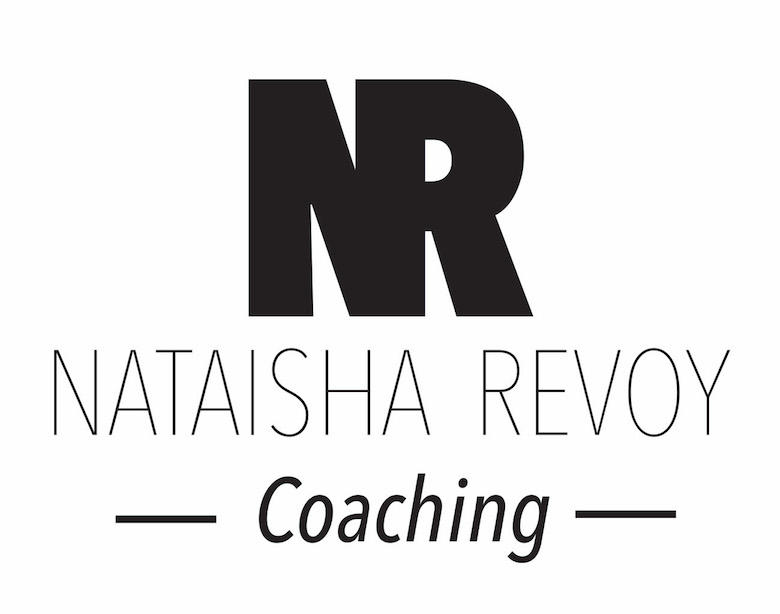Are you ready to lead with clarity and confidence, even in times of challenge and uncertainty?
Leadership isn’t about always having the answers—it’s about embracing discomfort as a powerful teacher. It’s in these moments of uncertainty that we have the opportunity to build resilience, strengthen our emotional agility, and develop deeper trust with our teams.
True leadership emerges when we lean into discomfort, using it as an opportunity to build courage, empathy, and optimism. If you’ve ever felt the weight of expectation, the fear of making the wrong decision, the discomfort of navigating tough conversations, or struggled to hold space for your team while dealing with your own doubts—know that you are not alone.
Leadership is not about perfection; it’s about showing up with authenticity, even when the path ahead isn’t clear. The reality is that discomfort and uncertainty are part of leadership. The key is not to eliminate these challenges but to develop the skills to navigate them with confidence and clarity. When challenges arise, do you find yourself hesitating, fearing failure, or struggling to navigate tough conversations?
You may have already read books on resilience, listened to leadership podcasts, or sought advice from mentors, but today, I want to offer my perspective on leading through the unknown.
Here are three powerful mindset shifts that will help you use discomfort to transform into a courageous and confident leader.
Which one resonates most with you?
Mindset Shift #1: Discomfort is the Birthplace of Courage
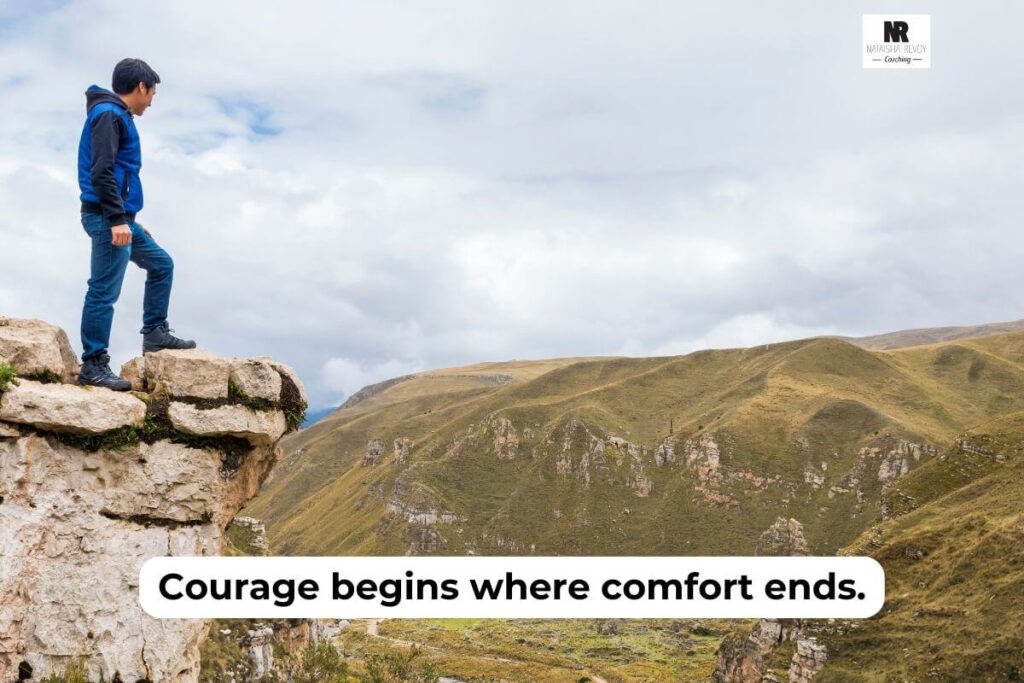
Courage isn’t just about taking bold action—it’s about how we hold ourselves in challenging moments. It’s about choosing reflection over reaction and stepping forward despite uncertainty.
Coaching creates a supportive space where you can explore your instincts, understand your leadership patterns, and build a more intentional, empowered approach—all within a supportive relationship with a coach trained to help facilitate change.
If you’ve ever hesitated in uncertain times, waiting for clarity before acting, ask yourself: Do I only move forward when I feel completely sure? Who benefits from that hesitation? What are the potential costs of not speaking up?
The truth is, courage isn’t demonstrated in times of calm. It’s revealed when adversity challenges us. We grow as leaders when we step forward, make decisions, and take action despite uncertainty.
So, what does this look like in practice?
- Instead of waiting for certainty, take one small, intentional action.
- Trust that clarity unfolds as you take action, not before. Waiting for certainty often keeps us stuck—progress comes from stepping forward.
- Lead with authenticity, admitting when you don’t have all the answers but showing commitment to progress.
Mindset Shift #2: Lean into Discomfort with Empathy
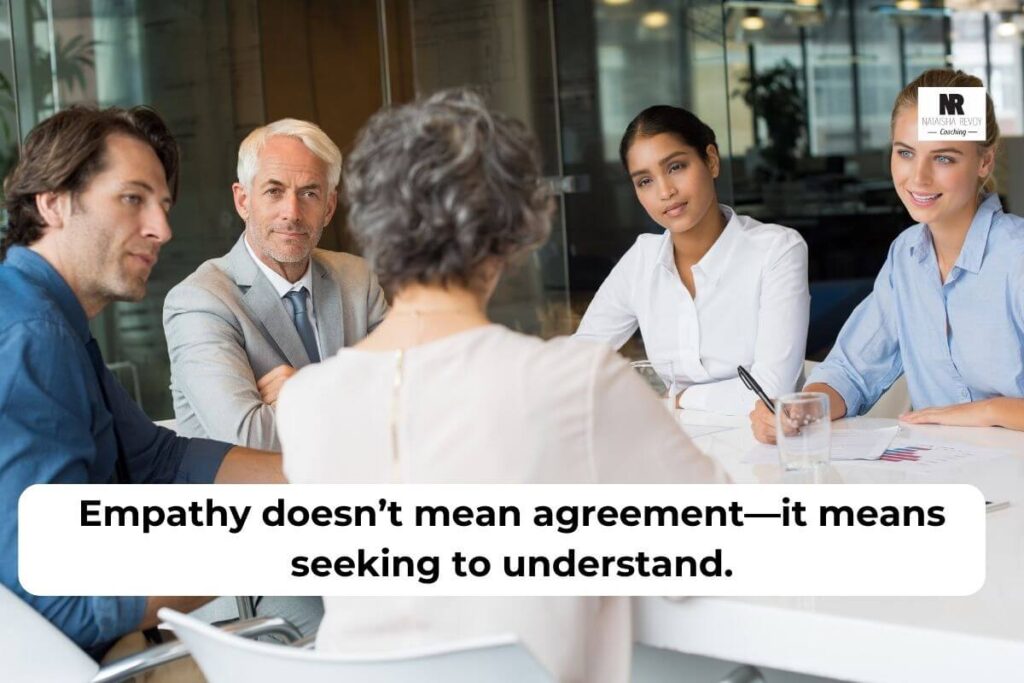
One of the hardest leadership challenges is engaging with people who see the world differently than we do. In uncertain times, tensions rise, and conversations become more polarized.
But here’s a question to consider: What shifts when we choose to approach even difficult conversations with empathy?
Empathy doesn’t mean agreement. It means seeking to understand. When we engage with empathy, we:
- Build trust, even in disagreement.
- Open the door to solutions that benefit everyone.
- Model the kind of leadership that inspires respect and collaboration.
Empathy is a powerful tool for connection and trust. As a leader, you can foster a culture of empathy within your team by:
- Modeling active listening – remember to listen to understand.
- Practicing curiosity – ask thoughtful questions instead of immediately responding with counterpoints.
- Validating emotions – acknowledge team members’ concerns before offering solutions.
- Encouraging open dialogue – ensure that different viewpoints are not just heard but encouraged, respected, and valued.
These small shifts can create a culture of trust and psychological safety in your team.
In difficult conversations, pause and ask:
- What might this person fear?
- What values are driving their perspective?
Leading with empathy allows you to navigate difficult conversations while building relationships, enabling compassion, and fostering understanding.
Mindset Shift #3: Find Stability in Gratitude and Optimism Amid Discomfort
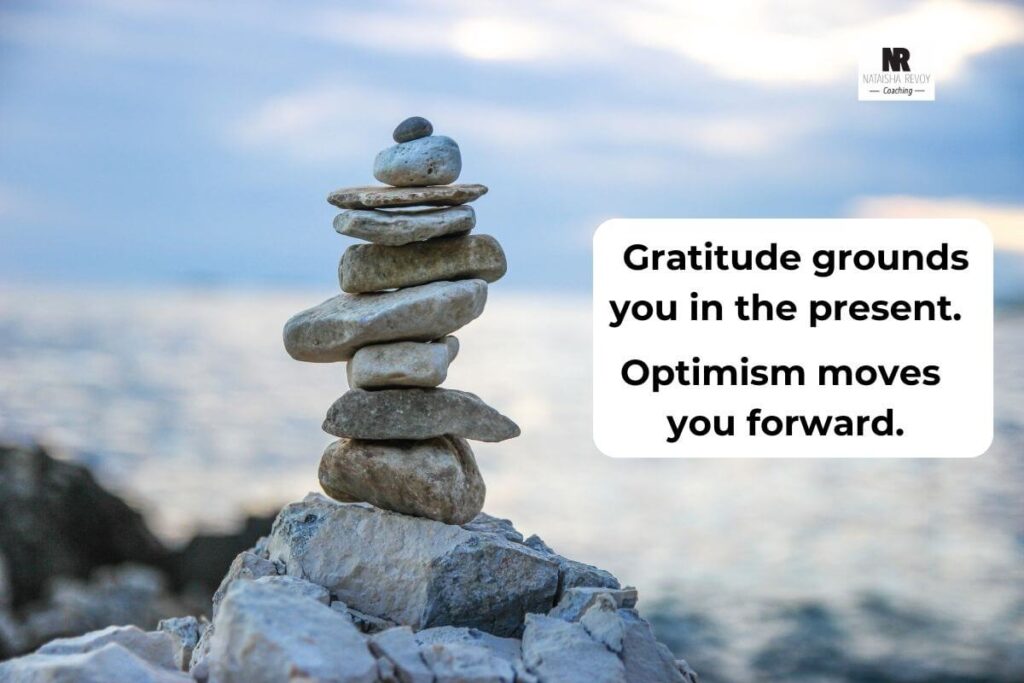
Uncertainty often triggers fear. But what if, instead of focusing on what’s unknown or different, we grounded ourselves in gratitude for what is?
Gratitude doesn’t mean ignoring challenges—it means recognizing what is stable, valuable, and strong right now. And when combined with optimism, it fuels forward movement.
- Gratitude keeps you anchored in what is good in the present moment.
- Optimism opens doors to possibilities that wouldn’t exist if we only focused on problems.
A practical approach: Start meetings or daily reflections with three things you’re grateful for and one possibility you’re excited about. Notice how this shifts your mindset and energy.
How Can You Use These Three Mindset Shifts to Create Impact Right Now?
Take a moment to reflect:
- Where in your leadership can you demonstrate courage today?
- How can you show up with empathy in a challenging conversation?
- What gratitude and optimism can you cultivate to lead with clarity?
These small, intentional shifts can transform how you engage with uncertainty—and how others experience your leadership.
Your Leadership Journey Starts Here!
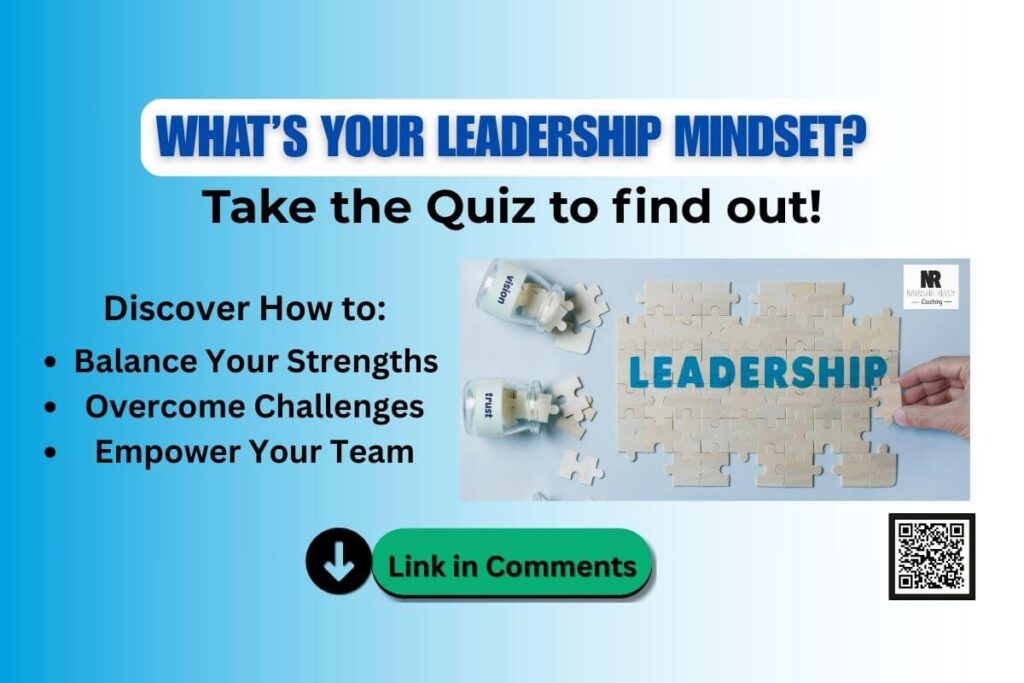
Our world today requires more from us, we need to challenge ourselves to step into our next level of leadership. Take this opportunity to grow and transform your leadership!
Start your leadership growth journey today!
Take the Leadership Quiz to gain personalized insights into your strengths and discover practical strategies to lead with confidence, clarity, and impact.
This quiz will help you gain insights into your strengths, recognize areas for growth, and provide actionable steps to optimize your leadership behaviors.
I hope this post has been helpful!
Any questions? Send me a message or DM me on LinkedIn —I’d love to hear how you’re applying these ideas in your leadership journey!
